Obituaries
A scroll through these entries illustrates the tremendous achievements that physiologists have achieved over many generations. Their valuable contributions to the discipline benefit us all.
This page provides brief notices on the deaths of Society Members as soon as we hear about them. Full PDF obituaries are presented where available.
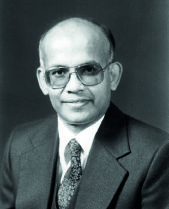
C T Kappagoda
( 1943 - 2015 )
Tissa Kappagoda was Professor of Medicine in the Division of Cardiovascular Medicine at the University of California, Davis. He qualified in Medicine at the University of Ceylon (1965), moving to England the following year. He held junior hospital appointments in the National Health Service before joining the Cardiovascular Unit in the Department of Physiology at Leeds University. His PhD thesis was on the function of atrial receptors, the subject of a series of papers in The Journal of Physiology and Experimental Physiology as well as in The Society’s publication, Atrial Receptors, (with RJ Linden). He developed a method for measuring oxygen uptake during exercise. Kappagoda left Leeds in 1978 and became Research Professor of Medicine and Director of Cardiac Rehabilitation at the University of Alberta in Canada, where his team worked on aspects of cardiovascular physiology, including pulmonary receptors in heart failure and exercise training in ischaemic heart disease. He was then appointed Professor of Medicine, Division of Cardiovascular Medicine, at the University of California, Davis and Director of the Preventive Cardiology Programs at the University of California Medical Center. Here, his research focused on the role of endothelial cells in regulating vascular tone and the effects of fatty acids and polyphenolic products present in plants in human and animal models. A caring physician, his contribution to cardiovascular science included over 200 peer-reviewed publications.

Bernard Katz
(1911 –2003)
Sir Bernard Katz was a German-born Nobel Prize winning physiologist and an icon of post-war biophysics. Katz was born to a Jewish family in Leipzig. After studying medicine at the University of Leipzig, he fled to England in 1935 to escape Nazi persecution. He went on to work at University College London (UCL) under AV Hill, and on finishing his PhD in 1938, won the Carnegie Fellowship to study with John Eccles at the Kanematsu Memorial Institute in Sydney. After being naturalised in 1941, Katz served in the Royal Australian Air Force for the duration of World War II. In 1946, he returned to UCL and continued his research on the synapse.
Katz became a Henry Head Fellow of the Royal Society in 1952, the same year in which he became Head of the newly designated Biophysics Department at UCL. He was knighted in 1969, shortly before receiving the Nobel Prize for Physiology or Medicine in 1970 (with Julius Axelrod and Ulf von Euler), for his discovery that neurotransmitter release at synapses is ‘quantal’, meaning that the amount of neurotransmitter release is never less than a fixed minimum and, if more, this is an integer multiple of this amount. This functional evidence was later complemented by ultrastructural evidence of transmitter-containing, membrane-bound vesicles common to nerve endings and secretory cells. Katz became Emeritus Professor at UCL in 1978.
On 20 April 2003, Sir Bernard Katz died aged 92. In 1999 The Physiological Society established the Hodgkin-Huxley-Katz Prize Lecture. This prestigious biennial lecture celebrates the contributions to the physiological sciences of Alan Hodgkin, Andrew Huxley and Bernard Katz.
Full Offsite Obituary PDF Obituary 1
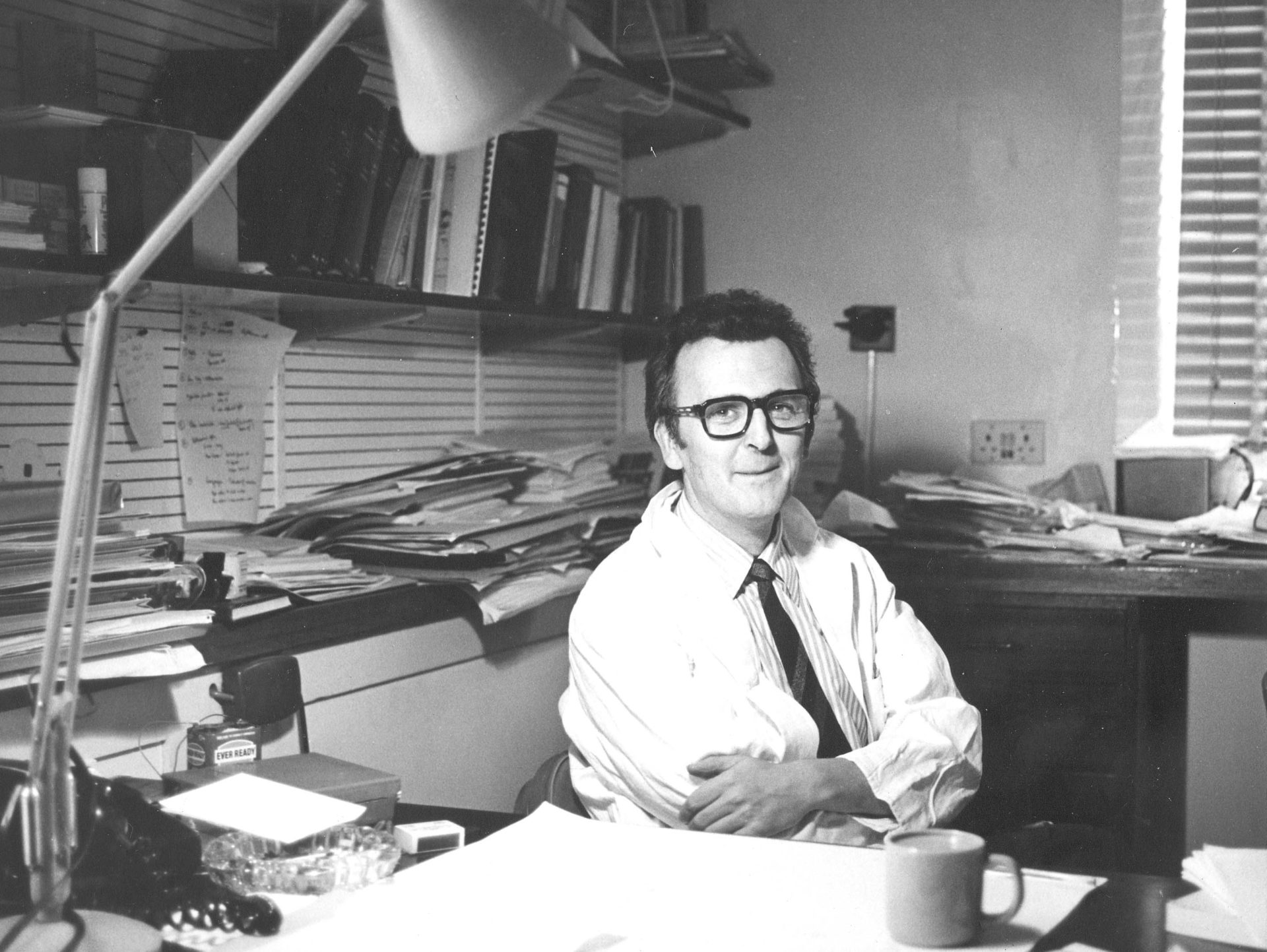
Michael Keating
( 1940 - 1998 )
Michael Keating did pioneering work on the role of activity in determining the specificity of neural connections in the vertebrate brain. With R.M.Gaze and others, he studied visual and auditory functional adaptation, becoming head of the Division of Neurophysiology at the National Institute for Medical Research in Mill Hill in 1976.

William Keatinge
( 1931 - 2008 )
William Richard Keatinge (Bill) studied medicine at Cambridge University and St Thomas’s Hospital in London. He was Director of Studies in Medicine at Pembroke College Cambridge (1958-60) and, after an interval as a Fullbright scholar, subsequently held an MRC post there (1961- 68). He joined the London Hospital Medical College (LHMC) as Reader in Physiology (1969) and was soon promoted to a Personal Chair (1970), head of department (1981) and Head of Physiology in the joint school (1990) after LHMC and St Bartholomew’s Hospital Medical College (Barts) merged with Queen Mary and Westfield College (QMW). A great international collaborator, especially in Russia, much of his research addressed temperature regulation and the control of blood vessels. During challenging times at his academic institution, he served in many senior administrative positions and was appointed Emeritus Professor on retirement in 1995.
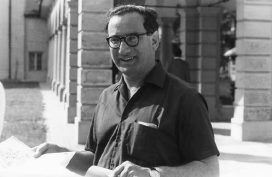
Gerald A. Kerkut
( 1927 - 2004 )
Gerald Kerkut was a natural sciences undergraduate, and then zoology PhD student, at Cambridge. His subsequent work on slug ganglia took him to Southampton as lecturer. There, he helped establish the Department of Physiology and Biochemistry (1959), was appointed the second Professor of Physiology and Biochemistry at Southampton (1966) and later served as Dean of Science, Chairman of the School of Biochemical and Physiological Sciences and Head of the Department of Neurophysiology. During three decades of research on invertebrate models he made several major advances in neurophysiology, including the development of an electrode for intracellular chloride measurement. Later, he worked on dorsal horn field potentials using isolated mammalian CNS preparations. Editor of more than fifty volumes, his publications ranged from a complete revision of a standard text on invertebrates to his own: ‘The Implications of Evolution’. He was founder (1960) and editor of Comparative Biochemistry and Physiology, editor of Progress in Neurobiology and, at one stage, had his own publishing company – Scientechnica. In his last years, his website attracted up to 60,000 hits/week with articles on politics, student concerns, money and education – as well as science.
Roderick P Kernan
d. 2014
The Society is sorry to hear of the death on 10 January of Roderick P (Roddy) Kernan, who was a member since 1963. He was Emeritus Professor of Physiology at University College Dublin.

David McKie Kerslake
( 1923 - 2005 )
David Kerslake made major contributions to the field of human thermal physiology. Medically qualified in 1946, he conducted his PhD research during RAF National Service at the Institute of Aviation Medicine (IAM). Appointed Officer in Charge of the IAM Climatic Section (1950), he was soon involved in developing the Institute’s climatic research facility. He investigated the physiological effects of thermal stresses on service personnel, publishing many papers in The Journal of Physiology and, later, a Monograph of The Physiological Society, The Stress of Hot Environments (1972). He was awarded an OBE (1962) and the Vernon Prize of the National Institute of Industrial Psychology (1966). Eschewing further promotion, he remained IAM Deputy Chief Scientific Officer until his retirement in 1978.

Richard Darwin Keynes
( 1919 - 2010 )
Richard Keynes was an eminent cell physiologist. His undergraduate studies at Cambridge were interrupted by work on sonar and radar during the Second World War, after which he became research fellow at Trinity College, teaching fellow at Peterhouse and University Lecturer in Physiology (1948-60). He then joined the Agricultural Research Council Institute of Animal Physiology at Babraham, becoming Director in 1965. With Peter Lewis, he applied novel radioactive tracer techniques to measure ionic movements across membranes – work that directly supported Hodgkin and Huxley’s subsequent Nobel prize discoveries. He investigated ion transport in secretory epithelia and, fascinated by South America, studied the Electroporus electric organ, whose electrophysiological mechanism he had clarified early in his career. He published books on Darwin’s zoological research and served on Galapagos conservation bodies. Secretary General (1972), and then President (1981–84), of the International Union for Pure and Applied Biophysics, he helped establish the ICSU/Unesco International Biosciences Networks, later becoming its Chairman (1982–1993). He received the Order of Scientific Merit (Brazil) and Honorary Membership of the Latin American Academy of Sciences amongst many academic honours, and was awarded the CBE in 1984.
Professor Cecil Kidd
(1933-2023)
The Society is sad to hear of the death of member Professor Cecil Kidd, who passed away on 27 July 2023. Professor Kidd was greatly involved in several aspects of The Society, dedicating almost 20 years of his life to our work and activities. He initially served as Chair (1977-81) before going onto be a designated member of the Council (1981-84). He was also a prominent figure for our journals. In his role as Chief Editor for Experimental Physiology (1987 – 1994), he played a fundamental part in shaping the journal into the internationally recognised home for research it is today. During his time as Chief Editor for Experimental Physiology, he was also an Editorial Board member for Monographs (1987-94).
Professor Kidd trained in physiology at King’s College, Newcastle-upon-Tyne (now known as Newcastle University) where his early research interests were in reflex control of the gastrointestinal tract. While working at the University of Leeds, he devoted his time to studying cardiac receptors and their central nervous connections and reflex responses. This remained the major interest throughout his career, while also exploring the potential roles of nitric oxide in the autonomic control mechanisms of the heart. He became Regius Chair of Physiology at the University of Aberdeen, working as head of the department until his retirement.
Professor Kidd taught medical students, physiology, biomedical science undergraduates and physical therapists. He wanted to underline the role of physiology to help in the clinically understanding and treatment of conditions.
He co-authored two textbooks, both aimed at medical and health students. In 2001, Professor Kidd, Andrew Davies and Asa Blakeley published ‘Human Physiology’. In 2005, Professor Kidd published ‘Case-based Medical Physiology’ co-written with Professor Christopher Bell and Professor Trefor Morgan. It was filled with discussions of patient case studies to improve understanding of basic physiological mechanisms and common conditions that occur because of disordered physiology.

Hirosi Kuriyama
( 1928 - 2003 )
Hirosi Kuriyama made immense contributions to our knowledge of smooth muscle, his lifelong research interest. He graduated in medicine from Fukuoka in 1951. After starting his career in Japanese physiology departments, he worked with Csapo in New York, using microelectrodes to record electrical activity in uterine smooth muscle. He subsequently completed an Oxford DPhil under Edith Bulbring, publishing work on the electrophysiology of guinea pig taenia coli. In 1964, he returned to Kyushu University and was later appointed head of the Department of Pharmacology, Faculty of Medicine (1976). Between 1970 and 1990, his group produced the majority of electrophysiological and physiological studies on smooth muscle which were published at the time. Many of his co-workers and assistants became heads of department in Japanese universities. He retired from Kyushu in 1992, worked briefly with Chugai Pharmaceutical Company, then joined Seinan Jo Gakuin University for nine years, eventually becoming President there.

Max Lab
d. 2016
Professor Max Lab, an influential Physiologist working in the UK, sadly passed away in January. He has been affiliated to Imperial College for most of his career and we would like to organise a one day symposium in his honor, and celebrate his scientific discoveries. Max was an extremely popular figure in the Physiology community.
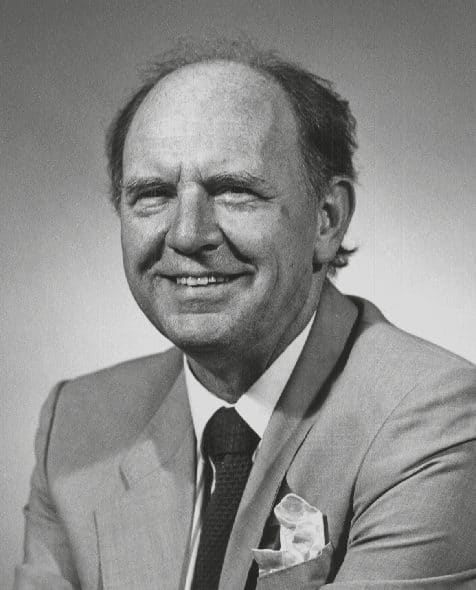
Joe Lamb
d. 2015
Joe, JF Lamb, was born in 1928, formerly Chandos Professor of Physiology at St Andrews University and later headed the Rowett Research Institute at the University of Aberdeen. He was an Honorary Member (2005), a member since 1963 and had been The Society Secretary, 1982-5. Joe served on the Journal of Physiology Editorial Board and as Physiology News Editor.
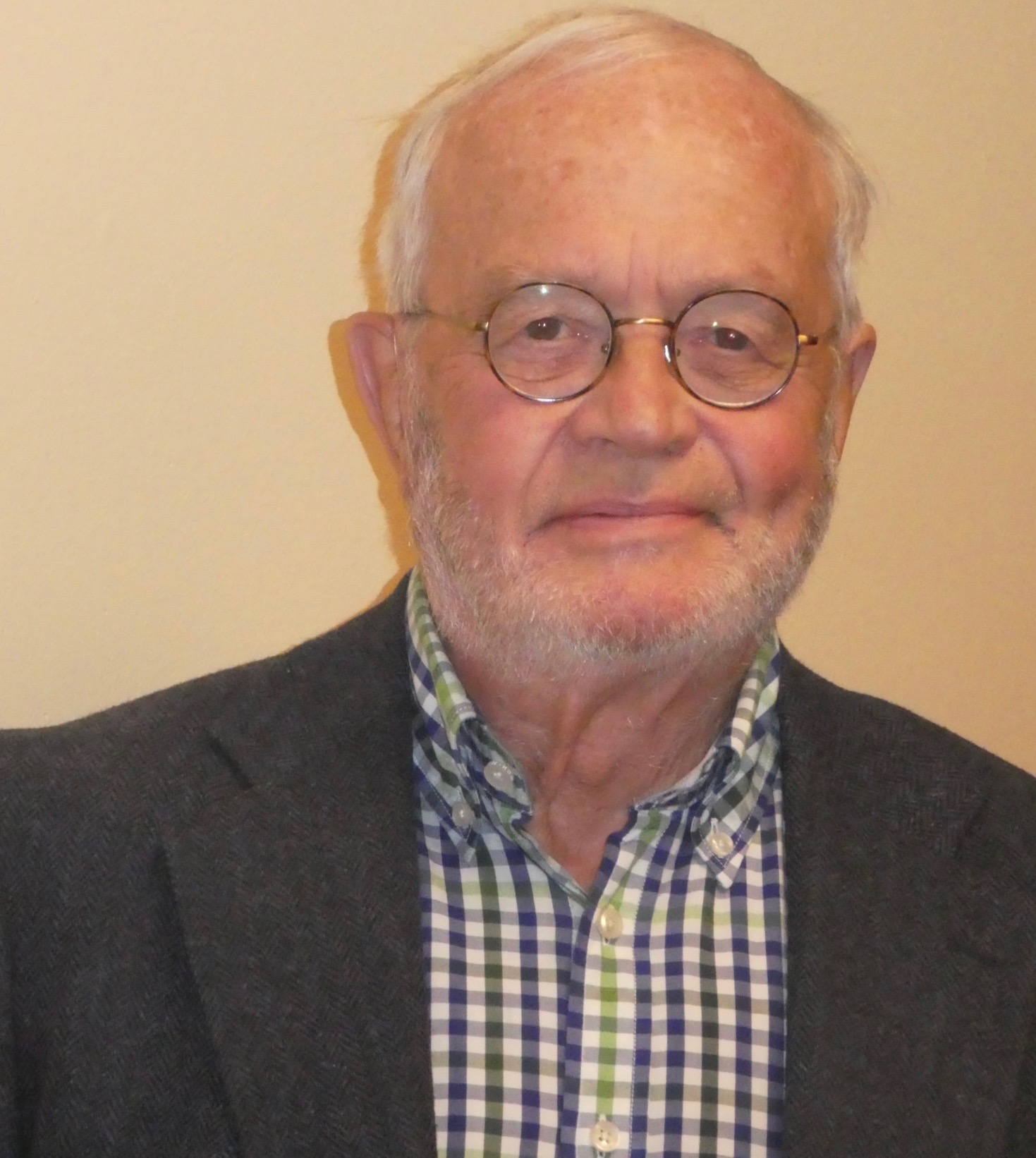
Jan Lännergren
( 1939-2020 )
Jan Lännergren, sadly left us on 2 October 2020. He was a member of The Physiological Society for many years and a sabbatical with Andrew Huxley at University College London, UK was an important step in his early career. During his years in research, Lännergren did pioneering work on skeletal muscle physiology at the single cell level and several of his findings are now included in physiology textbooks.
Yves Laporte
d. 2012
Yves Laporte, one of the most eminent physiologists of the second half of the 20th century, has died in Paris, aged 91. Yves was a great admirer and supporter of The Physiological Society, after he was introduced to it by David Barker in the early 60s.

Paul Lauterbur
( 1929 - 2007 )
Paul Lauterbur published the first magnetic resonance image in a short letter to Nature in 1973 (242, 190-191). The invention of MRI won him many prizes and awards, culminating in the 2003 Nobel Prize for Physiology or Medicine jointly with the British physicist Peter Mansfield. Having gained his Bachelor degree from Case Institute of Technology, he was drafted into the US army where he used an NMR spectrometer for the first time and published several papers. After military service, he completed graduate school and became an Associate Professor at the State University of New York (SUNY), where his Stony Brook laboratory became a focus for others interested in the idea of imaging with NMR.
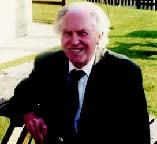
Peter Raymond Lewis
( 1924 - 2007 )
Peter Lewis followed undergraduate chemistry at Oxford with a DPhil thesis on the kinetics of bacterial growth. He joined the Cambridge Physiological Laboratory (1948), working on sodium and potassium flux in squid nerves with Richard Keynes. He studied diurnal rhythms on MRC-funded research trips to Spitzbergen. Working with the histologist, Charles Shute, he then turned to the cholinesterases that became central to his career, publishing landmark papers in Brain (1967) on cholinesterase-containing fibres in the rat brain. He continued his cholinergic work when he returned to The Physiological Laboratory (1970), with additional wide-ranging research interests including spectral sensitivity curves, monoamines, placental esterases and weeping lubrication in mammalian joints. A medical society founded (2007) in his college, Corpus Christi, was named the Lewis Society of Medicine by unanimous decision.
Malcolm Lidierth
(1961-2019)
The Society is saddened to hear of the death of Member Malcolm Lidierth at the age of 58. A neurophysiologist with a rare talent for in vivo recording, he completed a PhD with David Armstrong in Bristol before becoming a lecturer in 1990 at the Sherrington School of Physiology at UMDS, later part of King’s College London. As well as collaborating with Pat Wall on studies of the dorsal horn and Lissauer tract, Malcolm had a particular flair for developing physiological analysis software, which he made freely available to others and thus it was widely used. An innovative and conscientious teacher, he ran a highly popular 3rd year neuroscience module for many years.

Ronald James Linden
( 1920 - 2010 )
Ron Linden founded a dynasty of Leeds-trained cardiovascular physiologists who have spread far and wide. A graduate of Leeds Medical School, he was awarded MB CHB (1951) and PhD (1958). He was then appointed research fellow at the National Heart Institute in Washington DC, returning to Leeds for his DSc (1965). In 1966 he was awarded a Personal Chair and embarked on the creation of the Cardiovascular Unit at Leeds, within the Department of Physiology. In 1977 he was appointed head of a separate Department of Cardiovascular Studies, his chair being one of the first endowed by the British Heart Foundation. He served on several editorial boards and was a member or chairman of several committees giving advice to government departments on physiological topics. He served on the University Grants Committee, and committees of the British Heart Foundation and the Ministry of Defence. Following retirement in 1985, he continued research collaboration with Gianni Losano at the University of Turin, from whom he received an honorary degree in Medicine and Surgery in 1993.

Olof Lippold
d. 2016
Olof Lippold (1923-2016) was born in London to parents of Swedish and German ancestry. He studied medicine at University College London during WW2, qualifying in 1946. He became a member of The Physiological Society in 1953. After initial clinical work, he joined the Physiology Department at UCL where worked until 1983, then moving to Royal Holloway as Head of Department. He researched in areas as varied as tetanus toxin action and muscle spindle excitation, the latter led to work on the effects of Direct Current on long-term brain function. He observed that the EEG alpha rhythm originated from ocular muscle activity rather than the underlying cortex. And he worked on Parkinsonism.
Olof was also a renowned teacher, revealed to a wider audience through successful textbooks such as ‘Human Physiology’ (a title taken over from Winton & Bayliss), ‘Respiratory Physiology’, ‘Neurophysiology of the Cerebral Cortex’ (with Lynn Bindmann) and ‘Physiology Illustrated’ (with his daughter, Barbara Cogdell). Amongst his many accomplishments, Olof was also a talented painter and pianist.
Alex Livingston
d. 2014
The Society is sorry to hear of the death of Alex Livingston, of the School of Veterinary Medicine at the University of Saskatchewan, Canada. He had been a member of The Society since 1998.
Margaret Lowrie
d. 2017
Margaret Lowrie gave her first communication to The Physiological Society in 1980 and joined the Society in 1986. In the 1980s and 1990s she worked with Professor Gerta Vrbova at University College London on nerve injury and she subsequently moved to Imperial College.

Hans-Cristoph Lüttgau
d. 2017
We are saddened to report that Hans-Christoph Lüttgau passed away on 5th November at the age of 91. He was an eminent physiologist who has made lasting contributions to our understanding of nerve function and the intricate events between excitation and contraction in muscle. He had been the founding Professor of Cell Physiology at Ruhr University, Bochum in Germany, an Editor of The Journal of Physiology, a member of The Society since 1965 and an Honorary Member since 1997.

Beverley R Mackenna
d. 2012
Bev has died at the age of 83. He became a Society Member in 1964. Recruited to the Physiology Department at Glasgow University by Robert Campbell Gary, much of his career at Glasgow University was devoted to the professional courses in Medicine and in Dentistry. He revised later editions of the successful textbook ‘Illustrated Physiology’ with Robin Callander. A calm and reserved character, Bev’s quiet professionalism and personal charm will be sadly missed by his many students and colleagues.
Tony Macknight
2022
The Society is saddened to hear of the death of Professor Tony Macknight, a great supporter of physiology and The Society.
Macknight studied medicine, undertaking postdoctoral research at the Harvard Medical School, Boston, US. From 2005 – 2010, he became Professor of Physiology at the University of Otago, New Zealand, during which time he was named a Fellow of the Royal Society of New Zealand.
Macknight’s distinguished career led to him founding the company, ADInstruments in 1986, which specialises in computer-based data acquisition systems for research and education. Macknight was a prominent figure in improving physiology education, keen to move away from some of the pitfalls of traditional teaching methods and shift towards a more active learning environment to help students understand and engage with the discipline.

Laurence Malcolm
( 1913 - 2001 )
Laurence Malcolm was the son of New Zealand physiologist Professor John Malcolm. His early career was spent in Otago, London and New York. He joined the National Institute for Medical Research, Mill Hill, in 1953 to study evoked potentials in spinal cord and brain. In 1959 he was awarded the Regius Chair in Physiology at Marischal College, University of Aberdeen. He served as Dean of the Science Faculty there in the early 1970s, introducing several notable teaching innovations.

Robert Martin
(2024)
The Society is sad to hear of the death of Professor Robert Martin. He was one of the early adventurers in biophysics, a field that developed from the late 50s. Professor Martin’s education involved notable figures in physiology. He carried out his graduate work with Bernhard Katz and presented his thesis defence to Andrew Huxley, who had to replace Alan Hodgkin on the board of examiners that day. His work on cellular neuronal function from 1954 to 1994 formed a foundational part of the field of Neuroscience
Professor Martin frequently published in The Journal of Physiology, discussing his work and findings on transmembrane potentials, ion channels and neuromuscular junctions. These articles are among the most cited in neuroscience history. He was also an editor for The Journal of Physiology from 1973 to 1978.
In 1970, Professor Martin was appointed Chair of Physiology at University of Colorado, US. He served in the position for 23 years before retiring in 1993. When he retired, the Department and Medical School sponsored a one-day Symposium in his honour and created the A. R. Martin Lectureship in Physiology. An annual event, where the A.R. Martin lecturers presents two talks, one tailored for a specialist audience and one adapted for a broader scientific audience. Professor Martin was most well-known for his work on synaptic function, both chemical and electrical, although he made important contributions to other fields as well.
Peter B C Matthews
1928-2020
The Society much regrets to hear of the death on 2 March of Honorary Member Peter Matthews FRS at the age of 91. Graduating in Natural Sciences at Cambridge, he subsequently studied medicine at Oxford, where he initiated his lifelong work on muscle receptors and motor control. Appointed a University Lecturer there in 1961, Peter became Professor of Sensorimotor Physiology (1987-96). His monograph for the Society, “Muscle Receptors and their Central Actions,” published in 1972, remains a model of scientific writing and insight. In 1980 Peter Matthews gave The Society’s Annual Review Prize Lecture. He was elected a Fellow of the Royal Society in 1973. Read his obituary in Physiology News here.

Archie McIntyre
( 1913 - 2002 )
Archie McIntyre was one of the founders of modern neuroscience in Australia. A medical graduate from Sydney University, his early research addressed the physiology of eye movements, uterine muscle and aviation. After the war, as a Rockefeller Fellow, he studied tendon reflexes with Herbert Gasser in New York, continuing this work as Nuffield scholar in Cambridge. He then accepted Jack Eccles’s offer of a senior lectureship in the physiology department at the University of Otago, becoming Head of Department there in 1952. In 1962 he was appointed professor of physiology at the new Monash University, Melbourne, and subsequently held a number of key national positions in Australian scientific institutions. He is best known for his work in neuroscience, publishing three landmark papers in 1960 on cutaneous sensory receptors. He is widely credited with designing the microelectrode equipment used in the work that brought Eccles the Nobel Prize in 1970.
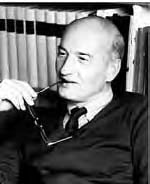
Hans Meves
( 1925 - 2008 )
Hans Meves qualified in medicine from the University of Marburg (1951). He worked on the physiology of nerve fibres with Hans Lullies at Saar University and then in Kiel, with B Frankenhauser in Stockholm (1957), and with R Stampfli in Homburg (1959 and 1961-7). Between 1962 and 1965, Meves collaborated with Alan Hodgkin and others on the effects of low ionic strength on action potentials. He was appointed Professor of Physiology in Kiel (1967) but left three years later for the Marine Biological Association, eventually becoming Senior Principal Scientific Officer. His work mostly addressed the selectivity (structure) and activation/inactivation mechanisms (gating) of ion channels, with several papers appearing in The Journal of Physiology. In 1980, Meves returned to succeed R Stampfli in the Chair of Physiology at Homburg. In 1990, he retired but continued to experiment, learning the patch clamp technique to do so. He became a Member of The Physiological Society in 1965 and was a member of the Editorial Board of The Journal of Physiology from 1975 to 1984.
Ricardo Miledi
d. 2017
The Society is much saddened to hear of the death of Ricardo Miledi at the age of 90. Educated in Mexico and a skilled experimenter, he and Bernard Katz laid the foundations of our understanding of the role of calcium in synaptic neurotransmitter release. As well as making many basic discoveries on the acetylcholine receptor channel (including the first description of ‘acetylcholine noise’ with Katz), he was one of the early developers of the use of oocytes for drug-receptor expression studies. Succeeding Katz as head of the Department of Biophysics at UCL, he moved to the University of California Irvine in 1986. Amongst other awards, Ricardo Miledi held the Royal Society’s Fullerton Chair whilst at UCL and received its Royal Medal in 1998.

Jere Holloway Mitchell
(1928 – 2021)
Dr Jere Holloway Mitchell, a cardiologist and an internationally recognised expert on exercise physiology, died on 17 July 2021 in Dallas, Texas. Mitchell trained in cardiovascular physiology at the National Heart, Lung, and Blood Institute at the National Institutes of Health in Maryland, US. He then spent almost six decades at the University of Texas Southwestern Medical Center, US, where he served two terms as the Chief of Cardiology.
Mitchell was the architect of the landmark Dallas Bedrest and Training Study, which transformed healthcare. Understanding how the human body adapts to bedrest and exercise led to the modern practice of getting patients out of bed and increasing their mobility as soon as possible after heart surgery.
His ground-breaking research on the impact of exercise on the human circulatory system awarded him the highest honours from several societies. He received the Young Investigator Award and the Distinguished Scientist Award from the American College of Cardiology, the only recipient of both awards. He was awarded the Paton Prize from The Physiological Society, the Carl J. Wiggers Award from the American Physiological Society and received the Honour Award from the American College of Sports Medicine.
John Finlay Benzie Morrison
(1942 – 2021)
The Society regrets to hear of the death of Professor John Morrison, Emeritus Professor of Physiology at the University of Leeds. He studied medicine at the University of Edinburgh, and in 1970, completed his PhD under the supervision of Professor Mary Pickford, FRS and was appointed to a lectureship at the University of Leeds. Professor Morrison was awarded a personal chair in 1988. In 1997 moved to the United Arab Emirates University, Al Ain. His research was on single unit studies of visceral afferents and their reflexes, latterly focused on the lower urinary tract, and the application of results from neurophysiological acute experiments into the pathophysiology of spinal injures and urology.
Peter Mott
d. 2014
The Society is saddened to learn of the death of Peter Mott on 14 March; he was 84. Peter worked at Cambridge University Press and was responsible for overseeing the publication of many journals including The Journal of Physiology and the meetings abstracts. When The Society took over the ailing Quarterly Journal of Experimental Physiology (now Experimental Physiology), Peter contributed to discussions on the change to monthly publication with a new title and cover design.
Vernon Mountcastle
d. 2015
The Society is sorry to hear of the death of Dr Vernon Mountcastle, who was an Honorary Member of The Society, elected in 1986. He passed away in January.
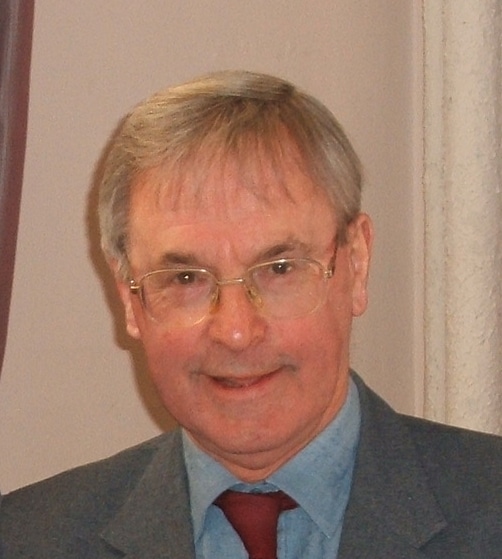
Thomas Copland Muir
(1933 – 2019)
Tom Muir, an editor of The Journal of Physiology (1992-99) and British Journal of Pharmacology (1978-84), was a Reader in Pharmacology at the University of Glasgow. After his initial PhD work on skeletal muscle relaxants in Glasgow with JJ Lewis, he worked predominantly on smooth muscle electrophysiology and autonomic transmission with JS Gillespie and David Pollock, working with Mollie Holman in Monash and collaborating with Joe Szurszewski at the Mayo Clinic. At the end of his career, he also worked with John McCarron in Glasgow.
John G Nicholls
(1929-2023)
The Society is greatly saddened to hear of the death of Honorary Member John Nicholls. Born in London, he attended Charing Cross Hospital Medical School before completing a PhD in the Biophysics Department at UCL in 1955. He held positions in Oxford, Harvard, Yale and Stanford, before moving to Basel in 1983 and finally to SISSA in Trieste in 1998. Nicholls’s work touched many areas of neurobiology, ideas he collected in the hugely influential textbook ‘From Neuron to Brain’, (originally coauthored in 1976 with Kuffler and Martin, but now in its 5th edition). For many years Nicholls, an arresting lecturer, organised an IBRO neuroscience course in many developing countries, usually in quite primitive conditions but responsible for inspiring many researchers, now often internationally prominent. He was elected a Fellow of the Royal Society in 1988.

Rolf Niedergerke
d. 2011
Rolf Niedergerke (1921–2011) worked principally to elucidate the links between excitation and contraction in muscle, especially cardiac muscle.
His 1954 Nature paper with Andrew Huxley – the first by either on muscle – described in clear terms the sliding filament mechanism of muscle contraction, now acknowledged as the paradigm for all forms of cellular motility. He was both a consummate experimentalist and a scrupulous reporter of his science.
Rolf was elected a Member of The Society in 1959 and an Honorary Member in 1987.
Syogoro Nishi
d. 2014
The Society is sorry to hear of the death of Syogoro Nishi on 13 February. He was an Honorary Member of the Society, elected in 1999.
Robert O Nneli
d. 2017
We are saddened to hear that Professor Robert O. Nneli, the Dean of the School of Basic Medical Sciences at the Federal University, Ndufu-Alike Ebonyi, died in a motor accident in April 2017 at the age of 69. He joined the university in 2012 after spending close to 20 years at Abia State University. He was educated at St. Patrick’s Secondary School Emene in Enugu and the University of Calabar. His physiological work covered a wide range of issues on cardiovascular and occular problems in the Nigerian population.

Susan Noble
d. 2015
Dr Susan Noble passed away in the John Radcliffe Hospital early in the morning of Sunday 4 October 2015, at the age of 75. She worked in the Department of Physiology, Anatomy and Genetics at The University of Oxford as a researcher and lecturer between 1969 and 1997. She published more than 50 papers while working in the Department, including the 1979 article in Nature with Drs Hilary Brown and Dario DiFrancesco that identified the ‘funny’ pacemaker current, and that led to the development of ivabradine (Servier). She was a Member since 1976.
Piers C.G. Nye
(1946-2021)
The Society is sad to learn of the death of Piers Nye, Emeritus University Lecturer in Physiology and Emeritus Fellow of Balliol College, Oxford.
Piers Charles Gillespie Nye came up from Marlborough College to read Agriculture at Oxford in 1965. He moved to UC Davis for his Ph.D to study under the eminent avian physiologist Ray Burger from 1969-1977, where he won the prestigious Carlsson Prize. He returned to Oxford in 1977, funded by the Medical Research Council, and later the Wellcome Trust from 1983, where he worked initially with R.W. Torrance before running the lab (Room 3, in the University Laboratory of Physiology). He played a dominant role on the international stage in our understanding of the physiology of the arterial chemoreceptors between 1984-1989, before he switched his interest to pulmonary hypoxic vasoconstriction.
Full Offsite Obituary PDF Obituary 1
Stephen O’Neill
d. 2012
Stephen O’Neill, a cardiac physiologist and Member of The Physiological Society since 1990, had died aged just 49 after maintaining a positive attitude since being diagnosed with a brain tumour six years ago. Stephen continued working and publishing until a matter of weeks before passing away. He has left warm and lasting memories of an excellent physiologist and loyal friend.
Ronan O’Regan
1937-2020
The Society is saddened to hear of the death of Member Professor Ronan (‘Ronnie’) O’Regan on 8 July at the age of 83. After studying medicine at University College Galway, he completed a PhD in physiology in 1969 with Eric Neil at the Middlesex Hospital. He returned in 1971 to a lectureship in the Department of Physiology at University College Dublin where he remained until retirement, pursuing research devoted to elucidating the physiological role of carotid body efferent fibres. Appointed to the Chair of Physiology in 1984, Ronnie served three terms as a popular Dean of the UCD School of Medicine until stepping down in 2000. A Society Member from 1972, Ronan O’Regan served two 4-year terms on the Committee, from 1979 and from 1988. Read his obituary in Physiology News here.
David Ogden
(d.2021)
The Society regrets to hear that David Ogden passed away on 4 December 2021.
Ogden joined the Division of Biosciences at University College London, UK, in 1960s, where he worked with David Colquhoun, an Emeritus Professor of Pharmacology, for many years. Ogden was a gifted builder of equipment. In the 1980s he helped construct some of the earliest patch clamp amplifiers, a device used in electrophysiology to study cell activity.
Ogden had an enormous impact on the next generation of researchers. For decades, he taught students to solder their own patch clamp amplifiers at the Plymouth Cell Physiology Workshop.
Notices of death 2025
Professor Evelyne Sernagor (March 2025)
Notices of death 2024
Brian Harvey (December 2024)
Roger Thomas (December 2024)
Christopher Charles Michel (July 2024)
Thomas Bolton (May 2024)
Robert Martin (March 2024)
Sheila Jennett (March 2024)
Tom Sears (February 2024)
Notices of death 2023
Robert Henderson (December 2023)
David Brown (October 2023)
Ronald Whittam (August 2023)
Cecil Kidd (July 2023)
David Begley (July 2023)
John G Nicholls (July 2023)
Jeanette Erdmann (July 2023)
Andrew Packard (June 2023)
KW Ranatunga (May 2023)
Gavin Pinniger (April 2023)
Ann Margaret Alderson (April 2023)
Ann Silver (March 2023)
Roger Ramsbottom (February 2023)
Kenneth Page (January 2023)
Notices of death 2022
Philippe Ascher (October 2022)
Tony Macknight (July 2022)
Ian Glynn (July 2022)
Sir Colin Blakemore (June 2022)
Sheila Gardiner(March 2022)
Richard Hellon (February 2022)
Harald Reuter (February 2022)
Kevin Tipton (January 2022)
Anthony Ridge (January 2022)
Notices of death 2021
Malcolm Roberts (December 2021)
Piers C.G. Nye (December 2021)
Derek Bergel (December 2021)
Mark Dunne (December 2021)
K A Paul Edman (December 2021)
Hisako Ikeda-Wolstencroft (December 2021)
David Ogden (December 2021)
Lars Ole Simonsen (November 2021)
John Morrison (September 2021)
Jere Mitchell (July 2021)
Frederick Noel Fastier (July 2021)
Edward Carmeliet (April 2021)
Notices of death 2020
Frank-Bowser Riley (December 2020)
Otto Hutter (November 2020)
Jan Lännergren (October 2020)
Leslie Iversen (July 2020)
Bernard T. Donovan (July 2020)
Edward M Winter (July 2020)
Horace B Barlow (July 2020)
Ronan O’Regan (July 2020)
Henry Michael Snow (June 2020).
Geoffrey Burnstock (June 2020)
Alan Williams (May 2020)
Gerhard Giebisch (April 2020)
Nicholas Standen (April 2020)
Peter B C Matthews (March 2020)
Michael Berridge (February 2020)
John Bligh (January 2020)
David A Johns (January 2020)
Notices of death 2019
Paul M Vanhoutte (August 2019)
Thomas Copland Muir (August 2019)
Sir Stanley Peart (March 2019)
To notify us of the death of a Member please email membership@physoc.org.
